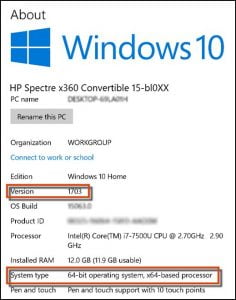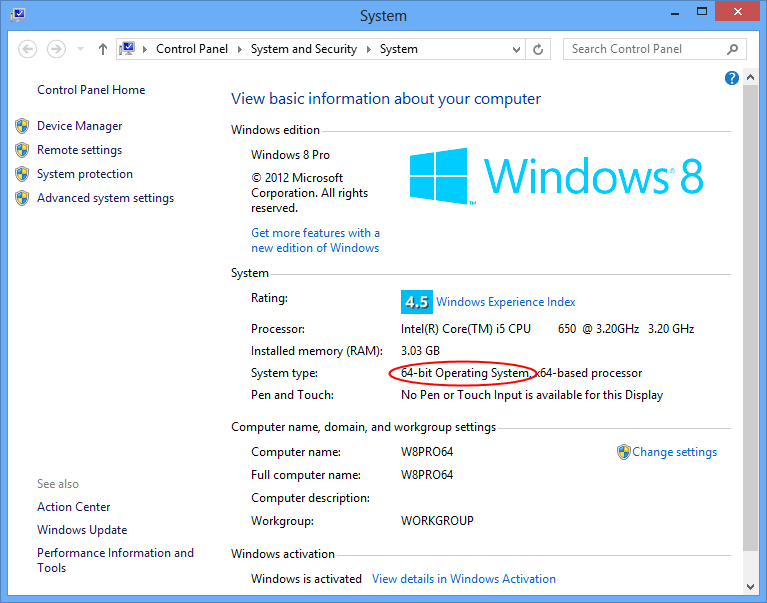
/001_am-i-running-a-32-bit-or-64-bit-version-of-windows-2624475-5bd0cca3c9e77c00510995ee.jpg)
- #Is my system 32 or 64 bit how to#
- #Is my system 32 or 64 bit software#
- #Is my system 32 or 64 bit code#
- #Is my system 32 or 64 bit Pc#
- #Is my system 32 or 64 bit free#
So same source code, that contains a path with the System32 folder included, can be compiled to both 32-bit and 64-bit program code without any changes. The answer is that the emulator redirects calls to System32 folder to the SysWOW64 folder transparently so even if the folder is hard coded to the System32 folder (like C:\Windows\System32), the emulator will make sure that the SysWOW64 folder is used instead. And to preserve compatibility, if the application is converted to 64-bit code, the 64-bit system folder is still named System32.īut what about 32-bit applications that have the system path hard coded and is running in a 64-bit Windows? How can they find the new SysWOW64 folder without changes in the program code, you might think. They have included “System32” in the folder path. Initially, Microsoft intended to rename the folder but choose not to because many developers have hard coded the path to the system folder in their applications source code. Well, this certainly seems illogical but it does have an explanation. Now, the question arises, why is the folder that stores binaries required by 64-bit applications named System32 and why did Microsoft choose to name the folder that contains files required by 32-bit applications ‘SysWOW64’ (Windows on Windows 64)? The name of these folders, and the bitness they are intended for, are shown in the table below: Folder Bitness Description System32 64 Windows system folder (system directory) for 64-bit files SysWow64 32 Widows system folder (system directory) for 32-bit files Program Files 64 Folder for 64-but program files Program Files (x86) 32 Folder for 32-bit program files One version is intended for 32-bit files and other version is intended for 64-bit files. The emulator will make the 32-bit application to think it is running on a 32-bit Windows and the same functionality that is accessible on a 32-bit Windows will also be accessible for the program on the 64-bit Windows.Ī 64-bit Windows has two different versions of the program files folder and the Windows system folder (system directory). When a 32-bit program run on a 64-bit Windows, a 32-bit emulator will be invoked to handle the 32-bit program. Microsoft ensures that both 32-bit(x86) and 64-bit(圆4) applications are able to run on a 64-bit Windows operating systems.
#Is my system 32 or 64 bit Pc#
A 32-bit version of VLC media player can run seamlessly on a 64-bit Windows operating system, or a PC game designed for Windows XP can run without problems on Windows 10, all thanks to backward compatibility.īut How Does a 64-Bit Windows OS Ensure Backward Compatibility?

Without backward compatibility, a program that works with one computer processor or operating system would stop working with the new version.
#Is my system 32 or 64 bit software#

#Is my system 32 or 64 bit how to#
How to use POSIX semaphores in C language.SCAN (Elevator) Disk Scheduling Algorithms.Program for SSTF disk scheduling algorithm.
#Is my system 32 or 64 bit free#



 0 kommentar(er)
0 kommentar(er)
